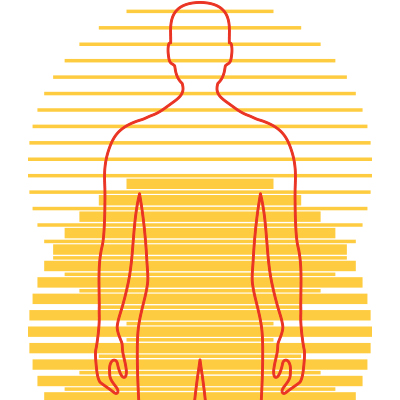 Leaders of CIM’s Center for Humanizing Medicine (CHM) are on an ambitious mission: to create nothing less than a national model for humanized health care.
Leaders of CIM’s Center for Humanizing Medicine (CHM) are on an ambitious mission: to create nothing less than a national model for humanized health care.
Key to that effort? Systematically defining what it means for health care to be humanizing in order to guide improvements — at Johns Hopkins and across the nation — to ensure that every patient is treated with dignity and respect, and receives compassionate care.
“Apart from articles on hospital design, health care literature rarely mentions how it can be more ‘humanizing.’ This presents an opportunity to define a term that reframes our thinking and makes new solutions imaginable,” notes Scott Wright, co-director of the CHM and co-author of a new study that has done just that.
The bold quest to define — and create objective measures for — a previously uncharted aspect of health care is not new for Wright, who is the Anne Gaines and G. Thomas Miller Professor of Medicine.
In 2008, Wright was among a quartet of CIM scholars (supported in their work by Sarah Miller Coulson) who developed rigorous measures for clinical excellence in a landmark paper that appeared in Mayo Clinic Proceedings. Their work formed the basis for CIM’s Miller Coulson Academy of Clinical Excellence — which now includes more than 100 Johns Hopkins faculty members — and has set the standards for great doctoring at hospitals around the country.
With this new research effort, Wright and his collaborators have built a big tent, bringing together perspectives from a broad variety of players: patients and caregivers; physicians and nurses; health care researchers, administrators, educators and learners; and health care policymakers and finance experts.
Taking a broadly inclusive, holistic approach to defining humanized care is crucial, notes study co-author Sean Tackett, international medical education director for the Division of General Internal Medicine at Johns Hopkins Bayview Medical Center.
“Right now, measurement efforts are so fragmented,” says Tackett. Physician groups look at quality metrics on heart failure or pneumonia, for example, while the Office of Well-Being focuses on burnout among health care providers. Other hospital leaders examine employee engagement, and still others concentrate on patient satisfaction.
“All of these measures should be connected, and for our study we conceptualized them as being connected,” says Tackett. “Our goal is to integrate all of these different measures rather than have them compete with each other. That way we can arrive at solutions that are better for everyone.”
To do that, the research team turned to a tool known as “group concept mapping” to brainstorm and gather ideas from 63 individuals at five hospitals across the Johns Hopkins health care system. Nearly all who participated wore multiple hats in providing their perspectives (physician/educator/caregiver, for example, or nurse/patient/administrator). Most respondents, some 63%, indicated they could represent the patient perspective.
“Both Sean and I have worked before with group concept mapping, and it’s very effective for bringing together perspectives from a wide variety of people,” says Wright, the CHM’s Mary Gallo CIM Scholar. “In defining humanized health care, it’s so important to hear different voices.”
“In defining humanized health care, it’s so important to hear different voices.” – Scott Wright
All the participants were surveyed to respond to the prompt, “One thing that can be done to more fully humanize health care experiences is…” and then were given the opportunity to provide up to 20 ideas. Once all the responses were in, the research team reviewed them for consistency, then recruited small groups of participants to sort the ideas into piles based on concept similarity.
Finally, the researchers used a software program to create a “concept map” that features eight domains — pillars central to defining the critical elements of humanized health care.
“One of the things that came through loud and clear was the importance of clinicians giving time and attention to patients and making authentic connections with them,” says Tackett. Domain 1 includes elements such as listening without judgment or interruption, remaining present and undistracted, and attending to patients’ feelings and beliefs.
Wright notes that the concept map from the study, slated to appear in Mayo Clinic Proceedings, “can have immediate application to health care quality improvement and research.”
“At the Center for Humanizing Medicine, we are already applying this framework,” says Wright. “We are identifying relevant existing measures that are currently being collected and analyzed in silos at Johns Hopkins Medicine and we are looking for opportunities to integrate them and to determine what is not being measured.”